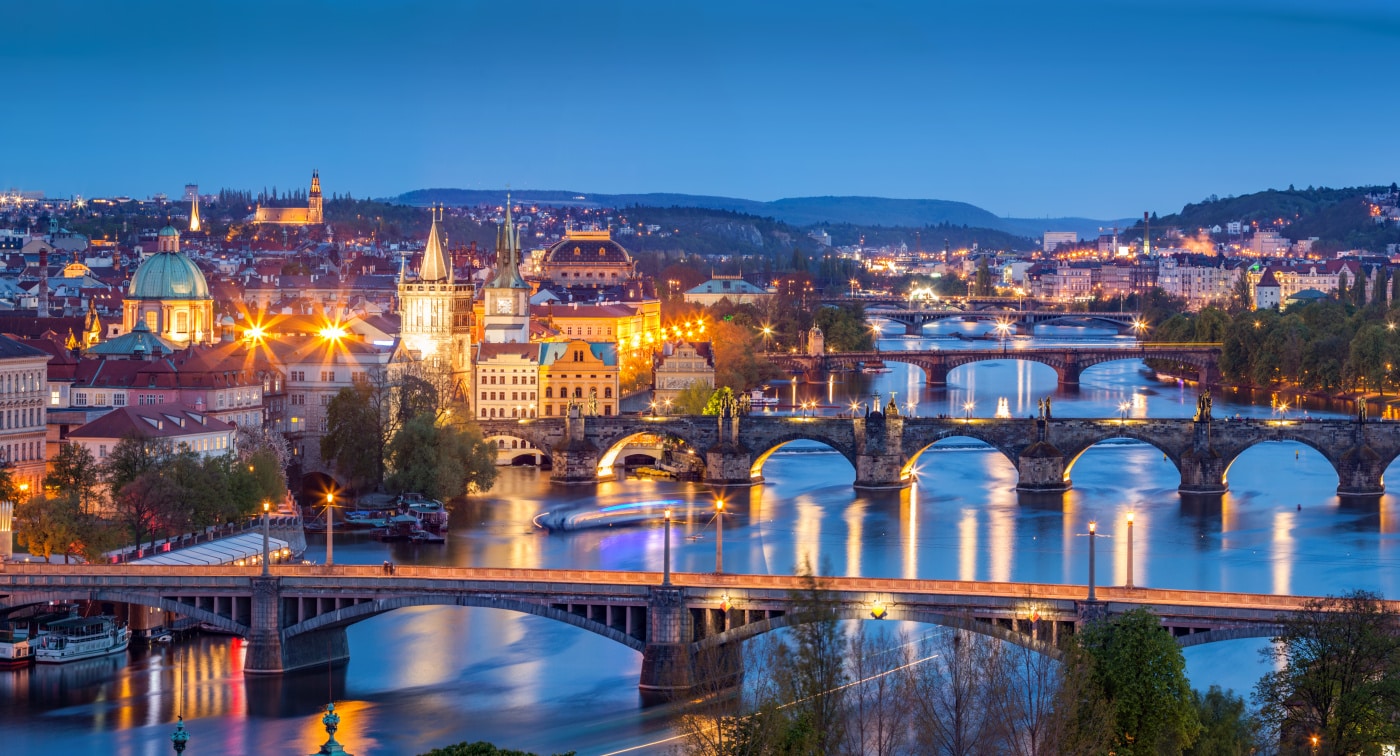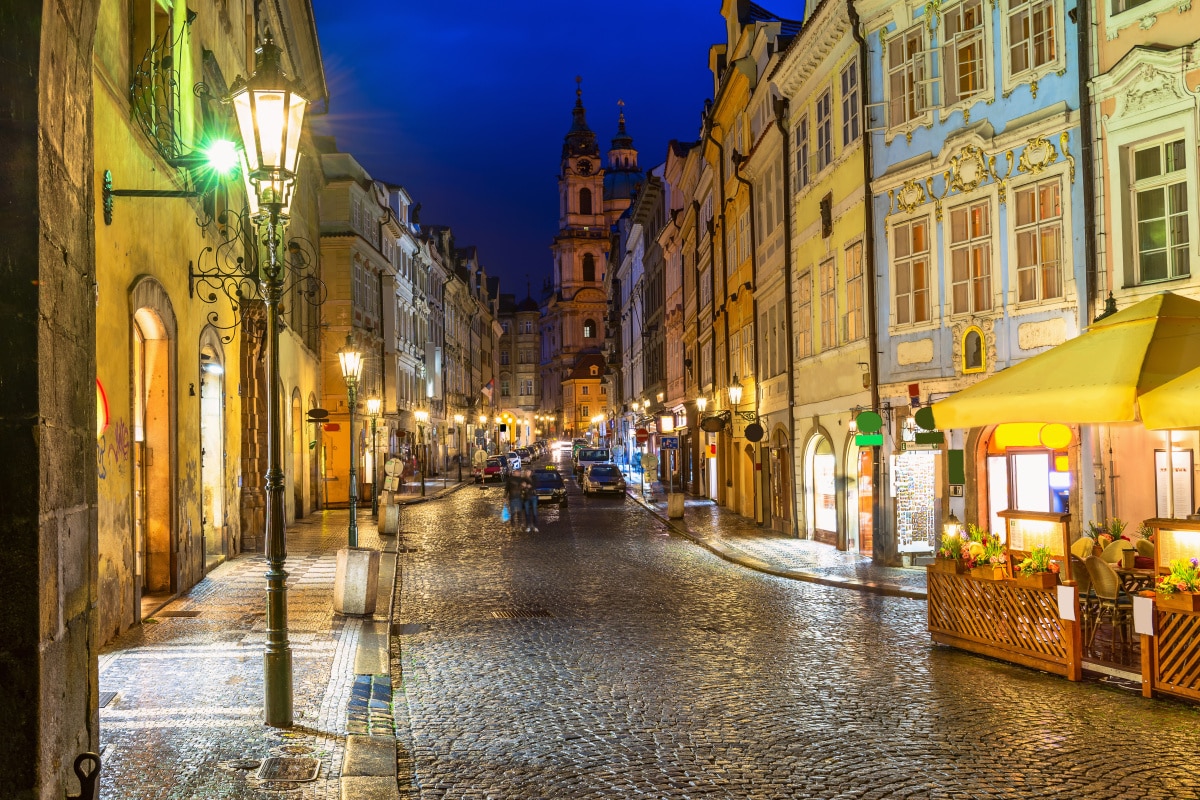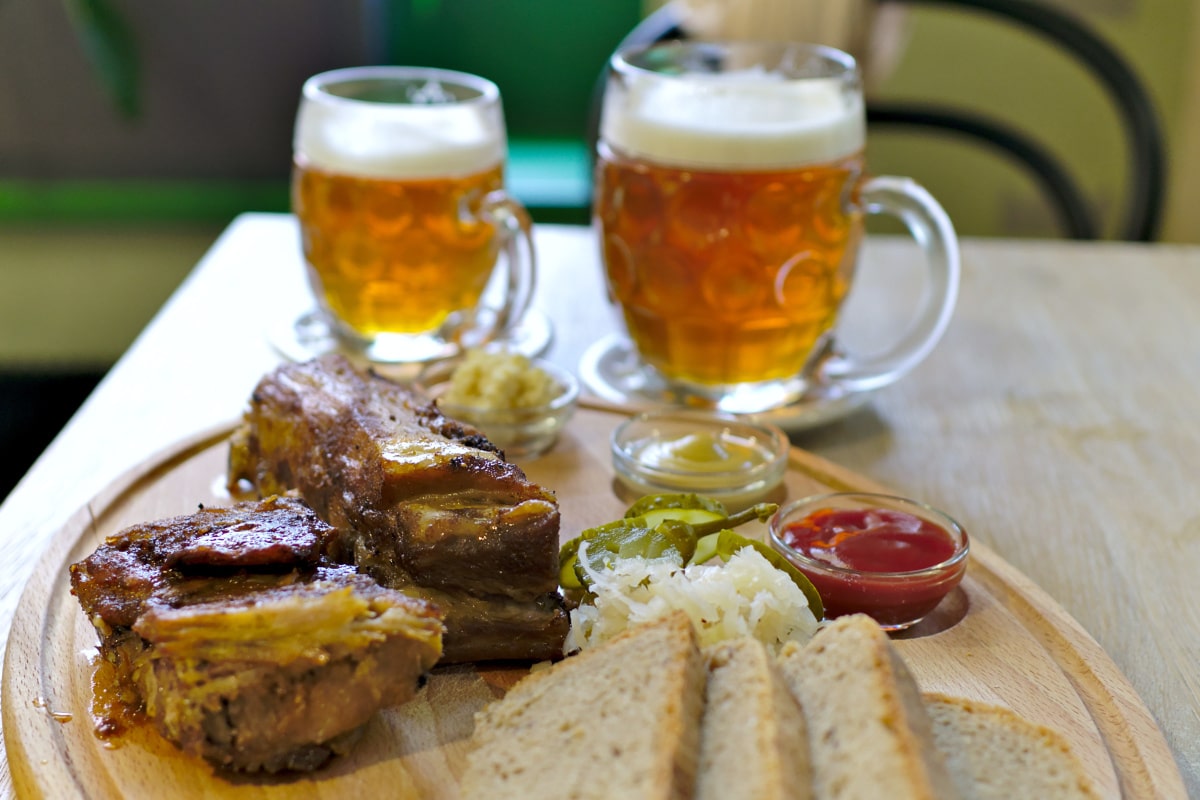
- Home
- Stag do ideas
- Prague, the most beautiful city…
Prague, the most beautiful city in the world!
- 12
- Dec
- ' 22

The Czech Republic’s largest and capital city situated on the Vltava River in Central Bohemia has been the political, cultural and economic center of the Bohemian and Czech state for more than a millennium and was also a jewel of the Austrian-Hungarian Empire. However, its origins go back even further, to around the 7th century AD.
Legend has it that the Slavic princess and soothsayer, Libuše, who ruled the Bohemian lands with her husband Přemysl, once had a vision of a man building the threshold (práh) of a house in the woods, so she pointed in that direction and proclaimed: “I see a great city whose glory will touch the stars. And since even the great noblemen must bow before a threshold, you shall give it the name of Prague.” And so it was done. Libuše ordered her people to find the place, build a castle, and Prague (Praha in Czech) was born.
Glorious with a thousand spires
We will never know for sure whether or not Libuše actually said those words. We do know, however, that Prague has indeed become a great city, and to this day is one of the most beautiful and interesting places in the world.
The city is well-known for its numerous spires and towers – it was even called the City of a Hundred Spires. But, if you try to count them now, you’ll soon find out that Prague has hundreds, maybe even thousands of spires, turrets and towers. So instead of spending a whole afternoon counting, we rather recommend visiting at least some of them. You can start with one of Prague’s landmarks – Petřín Observation Tower (also Petřín Lookout Tower) on top of Petřín Hill, close to Prague Castle and Strahov Monastery.
The Petřín Observation Tower, often described as a small version of the Eiffel Tower, is a 63,5 meters tall steel-framework tower with 2 staircases (each having 299 stairs), one leading up and the other down. The Tower was built in only 4 months in 1891 and apart from the reconstruction work between 1979 and 2002 it has been opened to the public – so that everyone can enjoy a beautiful panoramic view of Prague. So either get a bit of exercise or take the lift, but don’t forget to include this place on your Prague to do list.
Towers or hills, beautiful views all around
If you are a fan of panoramic views (and even if you are not), there are several other spots you must visit while in Prague. We would advise you to continue from Petřín Tower to Strahov Monastery, a large complex of buildings (at least check out the Library at a minimum) including its own brewery. From there, head to Loreta cloister, wait for the famous chimes to start playing (from 8am to 6 pm, every hour, every day) and then continue on to Prague Castle courtyard. The Prague Castle itself offers plenty of possibilities. You can check some of the permanent or temporary exhibits, visit St. Vitus Cathedral, Golden Alley, St. George’s Basilica or simply stroll around the grounds.
But if you head outside the Castle grounds, you will experience a wonderful view of the whole city. Spread out before you is the “flatter” part of Prague with places such as the National Theatre with its golden roof, Vítkov Hill, Žižkov Tower, Charles Bridge (and many other bridges), Vyšehrad Castle, and much more.
The most significant people from Czech history
From the castle, you should continue down the hill towards “Malá Strana” and to the historic city center. You can take metro A (at “Malostranská” stop, direction Depo Hostivař), change at “Muzeum” stop to metro C (direction Háje) and travel to Vyšehrad Castle (“Vyšehrad” stop), a historic fort and castle that is situated on the south-east bank of Vltava river.
The origins of the Castle are lost, but it is presumed that it was built in the 10th century AD. In the 11th century, it became a seat of the kings and experienced tremendous growth that stopped in the middle of 12th century when the Czech kings moved their seat back to Prague Castle. During the next 800 years, Vyšehrad fell into ruin but was subsequently renovated and adjusted to its current state.
Today, you can have a picnic on one of the Vyšehrad meadows, gaze out from battlements enjoying almost 360° views of Prague, or visit Vyšehrad cemetery and Slavín tomb situated next to the Basilica of St. Peter and St. Paul. The cemetery and tomb are the final resting places of many notable Czech composers, writers, actors, sculptors and painters (e.g. Bedřich Smetana, Antonín Dvořák, Alfons Mucha, Karel Čapek, František Křižík, Josef Masopust and so on). Several politicians are also buried there, however, Vyšehrad cemetery is primarily dedicated to artists, scientists, sportsmen, nuns and priests.
Wandering the streets

For the next part of the trip, we would suggest you visit the city center. You can admire the city on foot or use the public transportation which is cheap, efficient and rated among the best in Europe. A little walk around the city center can be quite refreshing, especially after or even before a stag do party night.
While walking you’ll also have a chance to discover some hidden gems such as the Jewish quarter Josefov with beautiful Jubilee synagogue and plenty of small cozy cafés, the National Baroque Library at Klementinum (an ex-Jesuit college), and the Lennon Wall and Museum (”The Lennon Wall Story”).
And once you are close to the latter – in Malá Strana – don’t hesitate to explore this part of the city even further. You will soon find that surrounding you are some beautiful gardens and parks (e.g. Kinsky Garden, Wallenstein Garden, Sacré Coeur Park), various restaurants (Smíchovské vidličky a nože, Atelier Red&Wine, Czech Slovak Restaurant and more), cafés (Angelato Gelaterie, IF Café at Werich’s villa, Kofárna Café, Claudia coffee café etc.) and bars (NIGHTMARE Bar Horror Prague, U Malého Glenna, Bar Bluelight and more).
Moreover, you can visit nearby Kampa Island (and museum), maybe organize a picnic in the park, see the yellow penguins and then head for Střelecký Island or Slovanský Island where you can rent a boat or pedal boat and enjoy a cruise on the Vltava river.
For dumpling lovers
Once you begin to explore the Czech cuisine in some of the restaurants, you must try some of the traditional Czech meals, such as “Svíčková”, i.e., sirloin steak with sauce and dumplings, “Kachna se zelím”, i.e., duck with red cabbage and potato dumplings, or “Vepřo, knedlo, zelo”, i.e., pork steak with white cabbage and dumplings. Yes, we know, lots of dumplings, but they are a traditional staple food of the Czech nation, the history of dumplings started around the 17th century.
Don’t be fooled though, the Czech dumplings are usually not spheres as you may be used to (well they could be but more on that in a moment). Their original shape is a cylinder of dough that is boiled and then sliced and served as a side dish.
Dumplings can also be balls and served as a main course. In this form, they are always stuffed with something. Either you will find salty ones stuffed with bacon or pork, with white cabbage and caramelized onion on top, or sweet ones with strawberries, blueberries, peaches or other fruit, sprinkled with quark and sugar and then topped off with melted butter poured over it all.
By the way, if you like dumplings, check out Knedlín Bistro.
The beer country

You can’t have Czech cuisine without discovering Czech beer as well. The Czechs are well-known as the nation of beer drinkers, and you will find quite a variety of this national treasure, so don’t stick with just Staropramen.
The prices of beer in the Czech Republic are below average compared to other countries in Europe which certainly helps contribute to the above-average consumption. Why would you drink water if it’s cheaper to get a pint (half a liter in Czech) of beer?
The most famous Czech brewery won’t be found in the capital. The all time classic is Pilsner Urquell from Plzeň city (you can even take a trip there and visit the brewery). It is a very popular brew and can be found in most Czech restaurants and pubs and should certainly be one of the beers you try.
However, you should also try some beers from local micro-breweries – we would recommend for instance “Bubenečská osmička” (The Bubeneč’s Eight) from Bubenečský pivovar, Únětické pivo 10° (Únětice beer) by Únětický pivovar (located in a village Únětice, but you can buy their beer in many bars and restaurants in Prague), or Benedict Nachmelený 11° (with extra hops) from Břevnovský pivovar.
Last but not least, you can drop by one of Prague beer spas for a unique experience. Soak in a hot royal oak tub full of beer and let the positive effects of hops, herbs and Brewer´s yeast treat your body. The beer spa experiences are also usually accompanied by unlimited consumption of beer.
Fancy something stronger?
For those of you who are a bit more daring, we can offer something far stronger than beer. You can have a shot of Slivovitz, a plum spirit primarily produced in Moravia (eastern part of the Czech Republic) that contains more than 50% alcohol (taste it for instance in the Museum of Rudolf Jelínek), or you can visit some of Prague’s Absinthe bars (e.g. Green Devil’s Absinthe Bar, or Absintherie Jílská) and get the famous anise flavored green coloured spirit that originated in Switzerland and has 45-74% alcohol concentration.
Should you find Slivovitz and Absinthe a bit too much for your taste, there are also a couple other traditional drinks we suggest you try. Both of them are made in the Czech Republic and are herb-based. The first is called “Becherovka”, a herbal bitter of yellow color with an alcohol content of 38% produced in Karlovy Vary since 1807. It is made from more than 20 different herbs which is the reason for the strong bitter, gingery and cinnamon flavor.
The other is called “Fernet Stock” with approx. 40% alcohol, made from 14 different herbs in Plzeň since 1927. It has black color, very thick texture and a bitter, zesty, lemon taste.
City center with cocktails and museums
Some of the spirits can be used as a base for cocktails – e.g. Fernet Stock for “Bavorák” and Becherovka for “Beton”. Speaking of which, there are also plenty of cocktail bars in Prague that you may visit and order great local or world-famous cocktails. So if you are in the city center, don’t miss Hemingway Bar (where you can also get Absinthe), Tretter’s New York Bar or Parlour.
And since you are already on the “other side of the river” again, back in the heart of Prague, you have a chance to explore the old city. Be sure to check out the National Theatre (get inside on a guided tour to explore the foundation stones, auditorium, stage, backstage, terraces and roof), Powder Tower (a gothic tower and one of the original city gates), Municipal House next to the Powder Tower, Czech National Bank (with the permanent exhibition “People and Money”), Orloj (a unique Astronomical Clock) at Staroměstské náměstí, or Bethlehem Chapel, a religious building from 14th century.
If you prefer museums over architecture, check the Museum of Communism, Lego Museum, Museum of Senses or the Sex Machine Museum. Yes, even that can be found in Prague.
You will never be bored
Whether you are a fan of art and history or nature, or if you prefer to party or walk and explore, Prague is a city you should visit. It offers a variety of activities and sights and we are certain you will never get bored and will have a wonderful experience.


